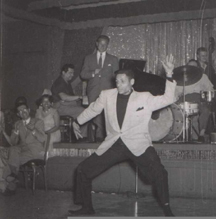Note: In November 2020, Port Of Harlem will celebrate 25 years of publication. As we countdown to our birthday, we will republish some of our most popular articles from our print issues. Thanks for subscribing and inviting others to join you in supporting our inclusive, diverse, pan-African publication - - now completely online. We originally published this article in the May 2001 – October 2001 print issue.
“Why do you listen to that old Spanish music?” That was the question my fellow African-American high school classmates would ask me upon discovering my interest in mambo. While the past 20 years have brought increased awareness, many African-Americans still allow Spanish-language lyrics to obscure the fact that salsa, mambo, plena cha cha cha, and other Caribbean genres flow from the same African root as jazz, blues, gospel, hip-hop and other Africa-American musical styles.
Not long ago, in the 1950s, a generation of Washingtonians and other African-Americans made a ritual of dancing at mambo clubs like the Casbah on U Street. Dancers such as Roland Kave performed for years on TV shows such as WTTG’s “Capitol Caravan” in the nation’s capital. New Yorkers went freely back and forth between the Palladium Ballroom and the neighboring jazz club, Birdland.
Mambo: The "Forgotten" Black Music
Praisng The Past


At the height of mambo’s popularity, in the early 1950s, Black magazines such as “Ebony,” “Sepia,” “Jet,” and “Hue,” routinely ran articles on mambo stars like Joe Loco, Tito Puente, and Perez Prado, alongside features on Dinah Washington, Sammy Davis, Jr., and Little Richard. Even if they didn’t speak Spanish, African-Americans recognized the rhythm as part of them and didn’t allow artificial socio-political barriers to limit their musical choices and cultural awareness.
The form of mambo that became an international sensation between 1948 and 1958 grew largely from Afro-Cuban jazz, a genre created by Afro-Cuban trumpeter Mario Bauza, who was a classically trained clarinettist with the Havana Philharmonic before a Cuban ban tapped him for a brief engagement in Harlem in 1929.
Read More
The form of mambo that became an international sensation between 1948 and 1958 grew largely from Afro-Cuban jazz, a genre created by Afro-Cuban trumpeter Mario Bauza, who was a classically trained clarinettist with the Havana Philharmonic before a Cuban ban tapped him for a brief engagement in Harlem in 1929.
Read More
Advertisers | Contact Us | Events | Links | Media Kit | Our Company | Payments Pier
Press Room | Print Cover Stories Archives | Electronic Issues and Talk Radio Archives | Writer's Guidelines






